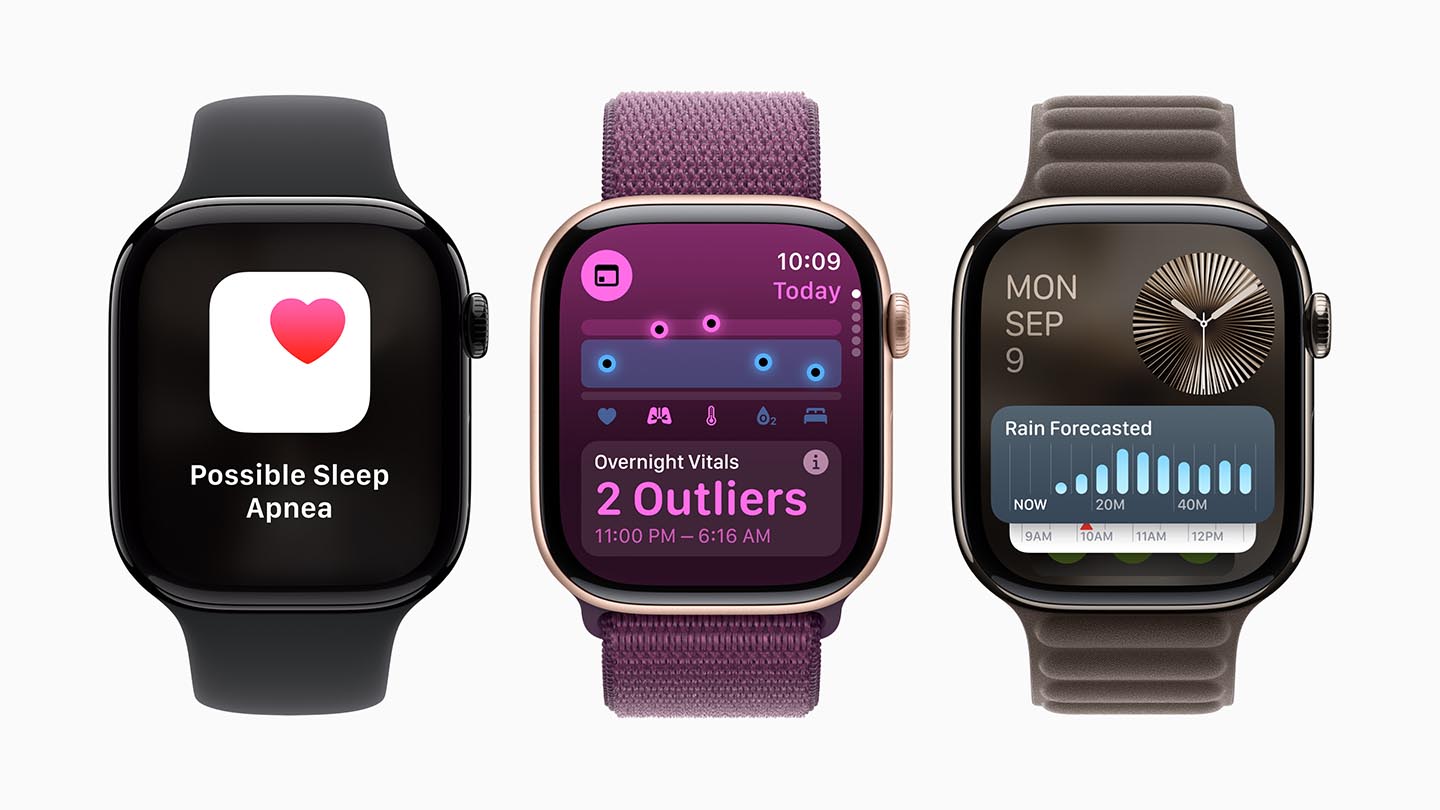On the 17th of this month, Apple released watchOS 11 for Apple Watch. New features like the Apple Watch Series 10 will provide the ability to identify signs of sleep apnea, as well as a new Vitals app and improved coaching.
The biggest feature in watchOS 11 is the ability to identify signs of sleep apnea. Compatible with Apple Watch Series 9, Apple Watch Series 10, and Apple Watch Ultra 2, to detect signs of sleep apnea, Apple Watch detects small wrist movements during sleep that are associated with disruptions in normal breathing patterns, monitored by an accelerometer and recorded by a new Apple Watch metric called “Respiratory Disorders.” Users can check for respiratory disturbances at night in the Health app, which classifies them as high or low and can be viewed over a period of one month, six months, or one year.

Users can check for irregular breathing during the night in the Health app on iPhone, which classifies it as either elevated or not elevated. A new sleep apnea notification algorithm analyzes data on breathing disorders every 30 days, and Apple Watch notifies users when they are showing signs of sleep apnea. The notification displays educational materials explaining when sleep apnea may occur, the importance of seeking treatment, three months of irregular breathing data, notification details, and the healthcare provider. It includes a PDF with additional information to help you during your visit. Available in over 150 countries and regions including the US, EU, and Japan.

The new Vitals app lets you check your daily health status and important nightly health metrics at a glance. If two or more metrics are out of the normal range, users will be notified and shown how those specific metrics compare to other aspects of their life, such as elevation changes, alcohol consumption, or even illness.

Training load is a way to measure how the intensity and duration of exercise affect a user’s body over time. Apple Watch calculates your training load over 28 days, using a weighted average that takes into account the length of your workouts during that period and the intensity of your workouts, as measured by a new effort rating. The effort rating is available after each workout and scores the difficulty of that workout on a scale of 1 to 10. Cardio-based workout types use a new algorithm and a combination of multiple exercise metrics to automatically generate an estimated effort rating.

The Activity and Vitality apps let you see how your training load in the last 7 days compares to your training load in the last 28 days, whether it is “just below”, “below”, “flat”, “above” or “just above” and can be confirmed in the form of a rating. It provides insight into whether the current stress on the body is increasing, staying the same, or easing, allowing users to adjust their training
Additional information in the iPhone Fitness app provides detailed information about how continuing to train at your current level can have an impact on your fitness, including potential changes in your body condition and risk of injury.
In addition to improved personalization, the Activity Ring also offers enhanced support while carrying. The Smart Stack feature, which allows users to quickly access important information from any watch face, further enhances personalization.

The Translate app is also compatible with Apple Watch. You can now scroll through any app using the double-tap gesture. The Tide Level app and new dials will also be added.



“Travel maven. Beer expert. Subtly charming alcohol fan. Internet junkie. Avid bacon scholar.”







More Stories
The ranking of the best survival horror games selected by the IGN US editorial team has been released! Resident Evil RE:2 ranked first
Enjoy a hot cigarette while looking at whales and tropical fish under the sea ⁉︎ “Ploom Dive” is an amazing spatial video experience using Apple Vision Pro
ASCII.jp: New macOS Release! macOS Sequoia 15 Can Display Your iPhone Screen on Your Mac!